PsychNewsDaily Publishers
100 Summit Drive
Burlington, MA, 01803
Telephone: (320) 349-2484
PsychNewsDaily Publishers
100 Summit Drive
Burlington, MA, 01803
Telephone: (320) 349-2484
Grooming cats enhances their comfort and health, reducing shedding and mats while promoting a shiny coat through regular brushing, nail trimming, and using cat-specific products.
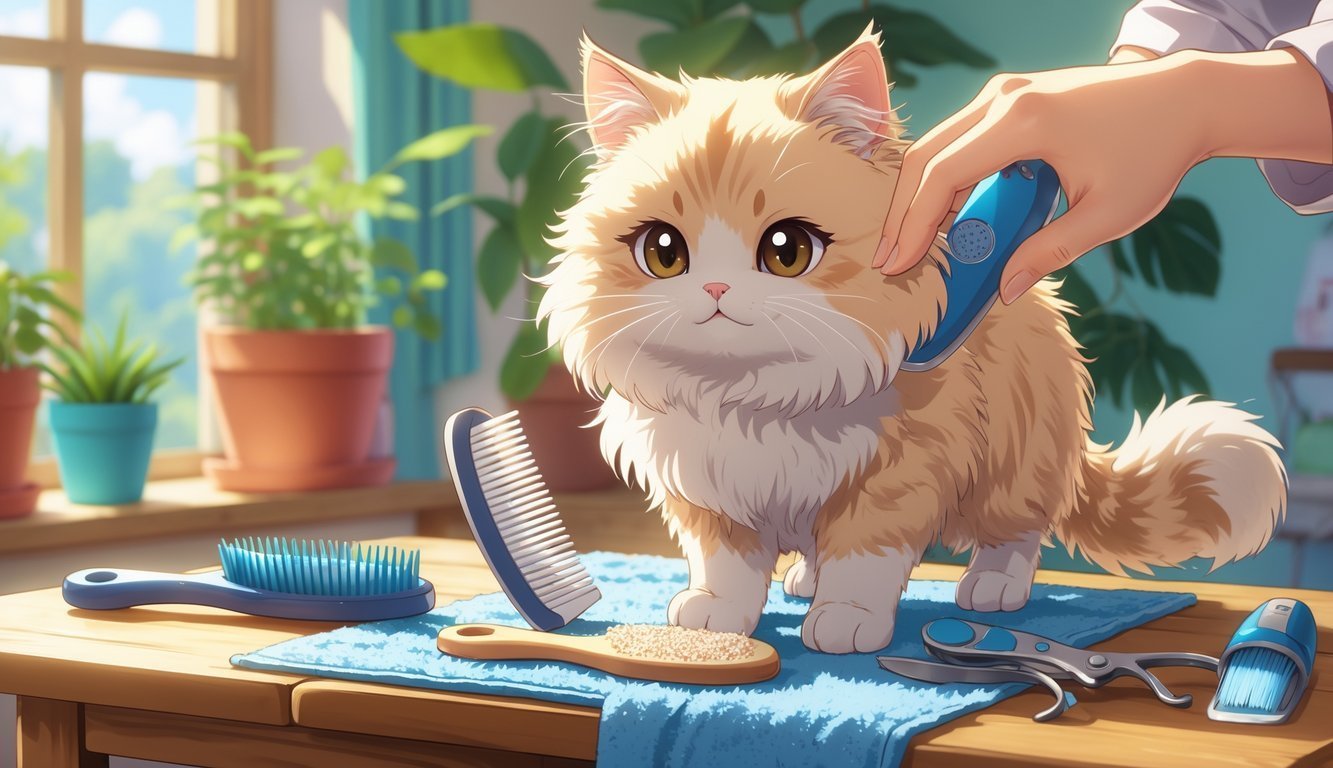
Keeping your cat well-groomed isn’t just about appearances—it actually supports their comfort and health, too. Simple habits can cut down on shedding, stop mats before they start, and keep skin and fur in good shape.
With the right tricks, you can turn grooming into an easy routine that leaves your cat looking great and feeling pretty relaxed.
You don’t have to buy pricey tools or follow complicated steps to care for your cat’s coat and nails. If you pick up a few practical hacks, you’ll keep grooming stress-free—and maybe even kind of fun for both of you.
Let’s dig into some ways to handle common grooming needs so they fit naturally into your day.
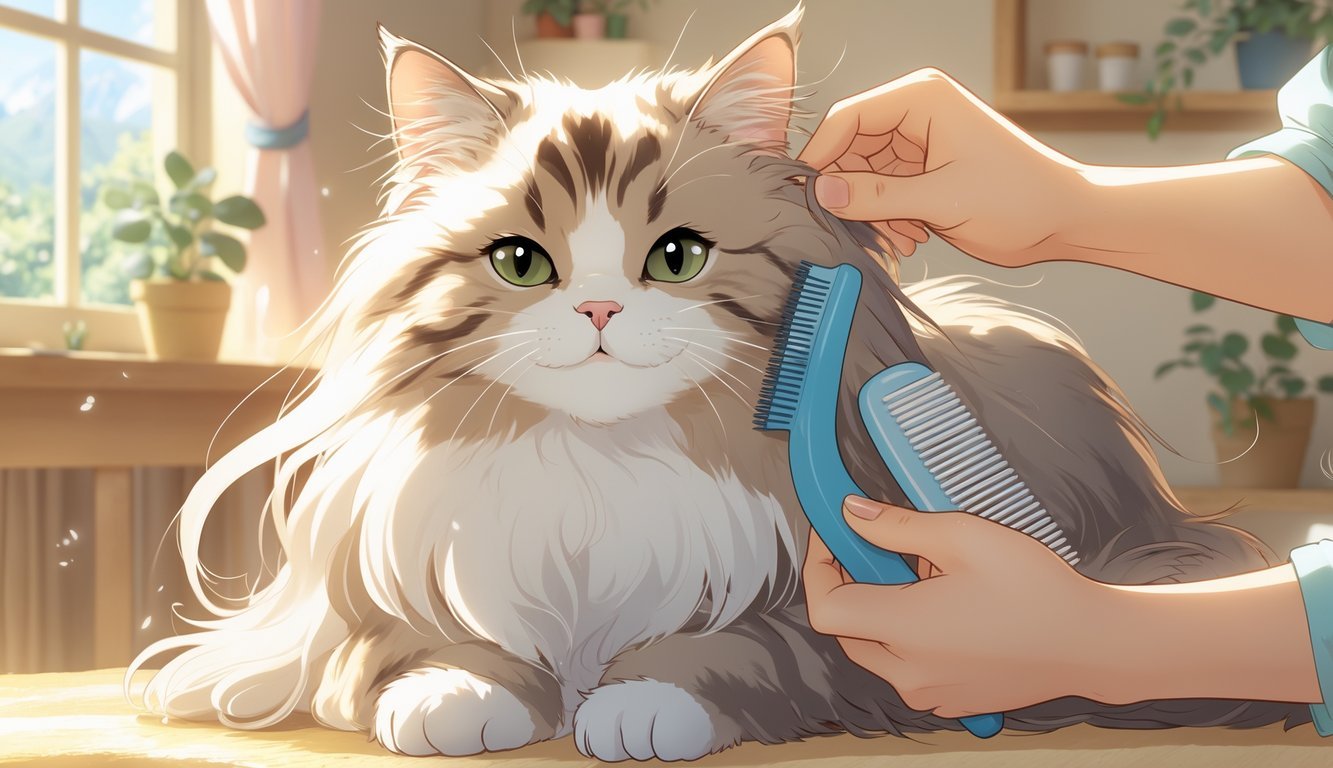
I always reach for a slicker brush with long-haired cats. Its fine, angled bristles slip right through the top layer and loosen up tangles before they turn into stubborn mats.
Brush slowly and gently—don’t yank or pull, or you’ll make things uncomfortable for your cat. This way, grooming feels more like a treat than a chore.
If you spot a small mat, work it out with short strokes. Don’t tug; that just makes it worse.
For bigger mats, grab a comb after the slicker brush to finish the job.
Brushing a few times a week keeps the coat smooth and cuts down on shedding. It also stops painful mats from forming in the first place.
Keep some treats nearby and offer one after brushing. Your cat will start to see grooming as a good thing, which makes next time a whole lot easier.
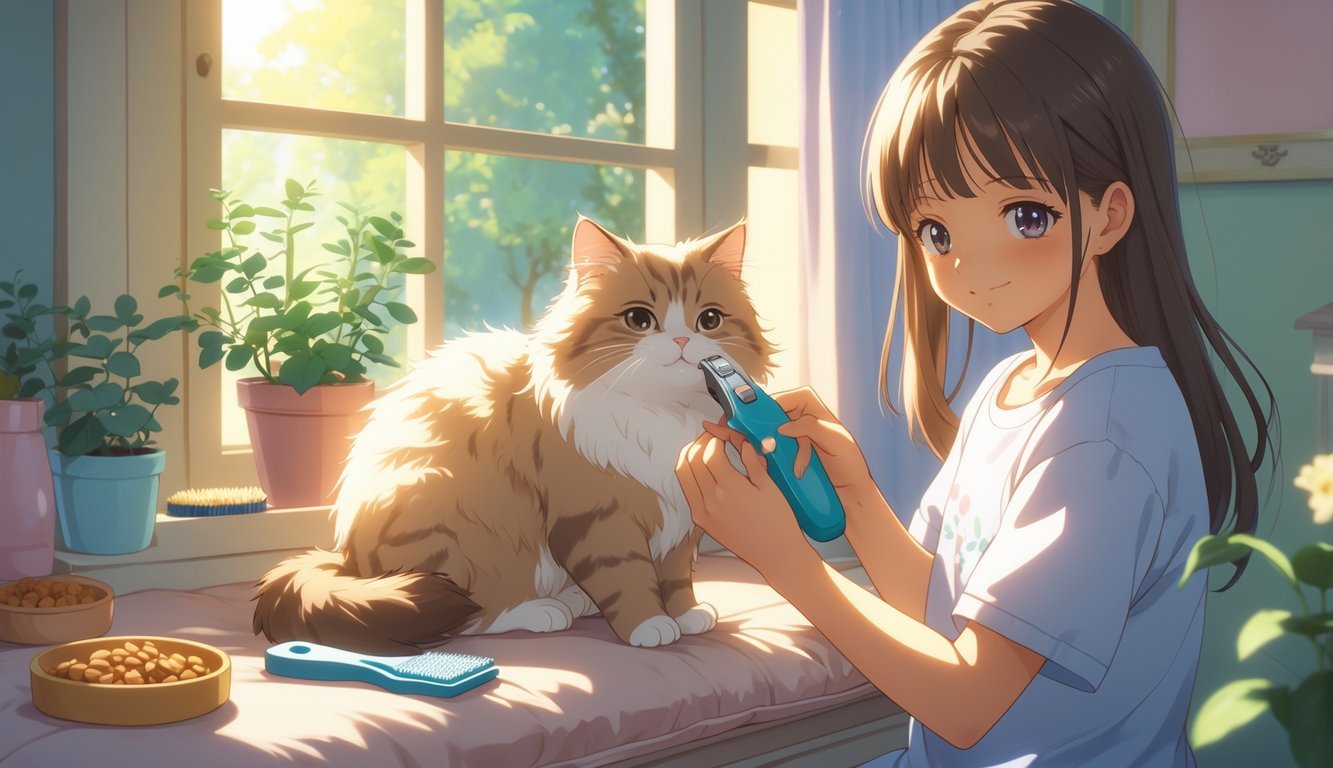
Trimming your cat’s nails helps protect your skin and furniture. It also makes walking and climbing easier for your cat.
A weekly trim works for most cats. Always grab clippers made just for cats, not the ones you use on yourself.
Pet-specific clippers cut cleanly and are less likely to split the nail. You can choose scissor-style or plier-style—go with whatever feels best in your hand.
Pick a quiet time, maybe after a meal or a play session, when your cat feels mellow. Press gently on the paw pad to extend the nail, then snip just the sharp tip.
Don’t cut into the quick—the pink part inside the nail with blood vessels. That hurts and can bleed.
If your cat squirms, just do a few nails at a time. Treats and praise help a lot—over time, nail trims become just another simple routine.
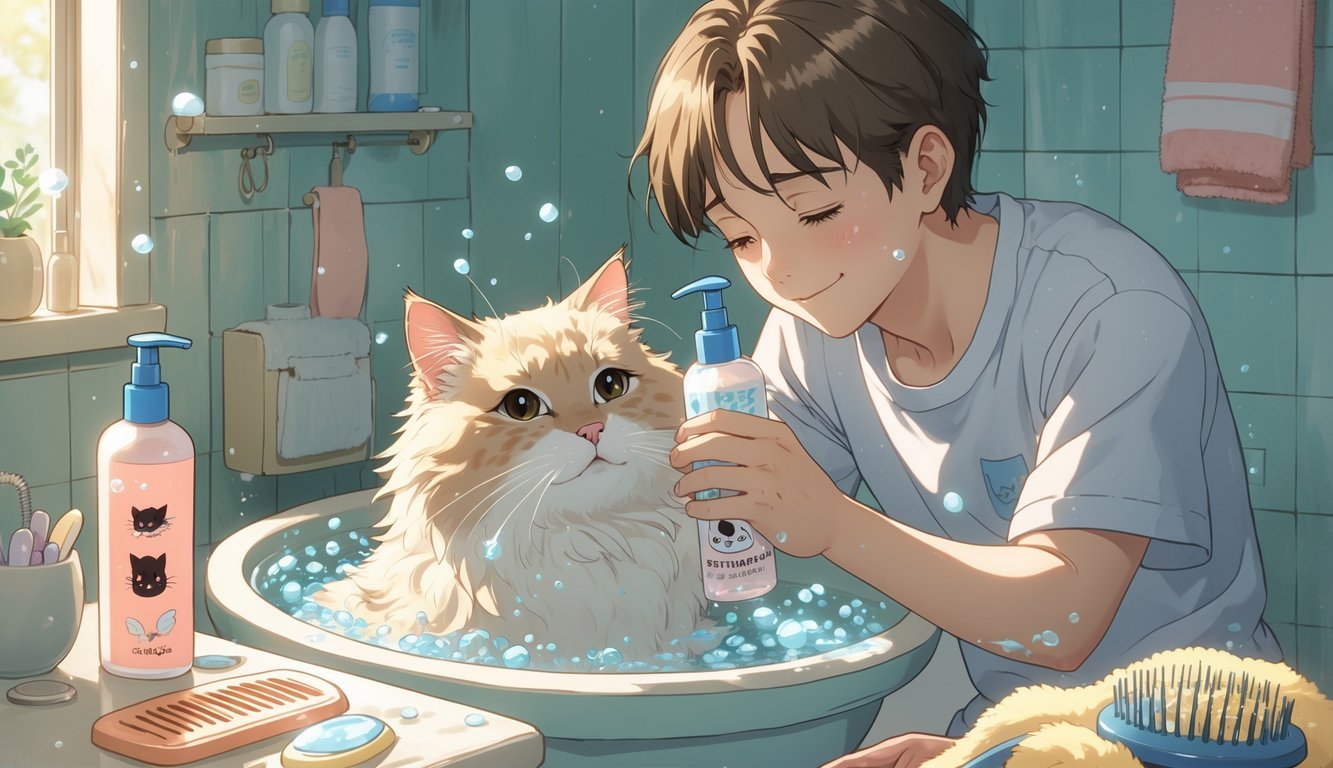
Always use a shampoo made for cats when it’s bath time. Human shampoos mess with your cat’s skin balance and can cause dryness or irritation.
Cat shampoos are pH-balanced and gentle, so they keep skin and fur healthy.
Pick a shampoo that fits your cat’s needs. For sensitive skin, grab a hypoallergenic one. If your cat has fleas or dandruff, look for a formula that targets those.
Lukewarm water keeps your cat comfortable. Wet the coat fully, add a small amount of shampoo, and work it in gently—steer clear of the eyes, ears, and nose.
Rinse really well so you don’t leave any shampoo behind. Leftover suds can make your cat itchy.
Wrap your cat in a soft towel and dry them gently. Bathing isn’t needed often, but when you do it with the right shampoo, it makes a huge difference.
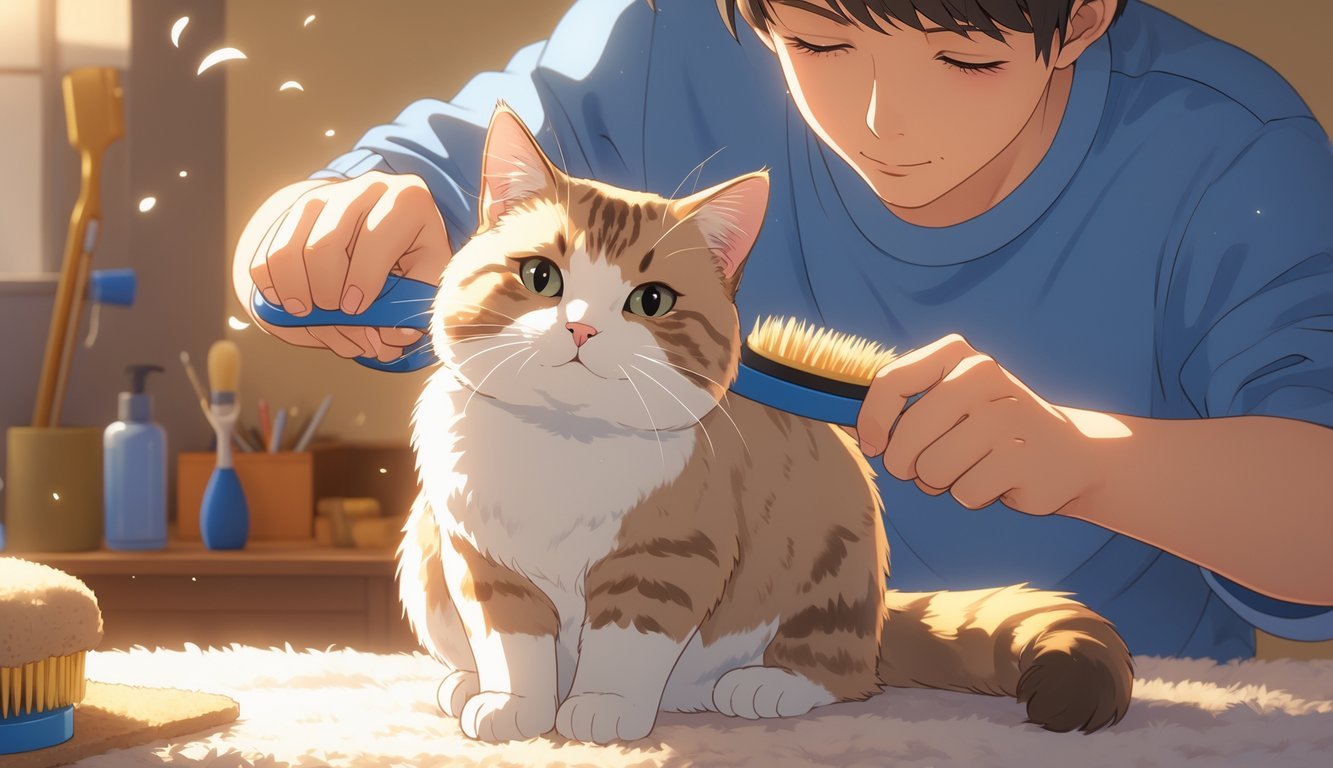
Short-haired cats don’t get as many tangles, but they still shed. A soft bristle brush helps you grab loose hairs before they end up everywhere.
A gentle brush feels nice on your cat’s skin. The soft bristles glide over the coat without pulling, so grooming actually becomes enjoyable.
Regular brushing spreads natural oils through the fur. This keeps their coat looking healthy and can help with dandruff.
Try to brush your short-haired cat a few times a week. It only takes a few minutes but really cuts down on shedding.
If your cat’s new to brushing, start slow. Let them sniff the brush and keep sessions short.
Eventually, your cat might even look forward to it—the soft bristles can feel like a mini massage.
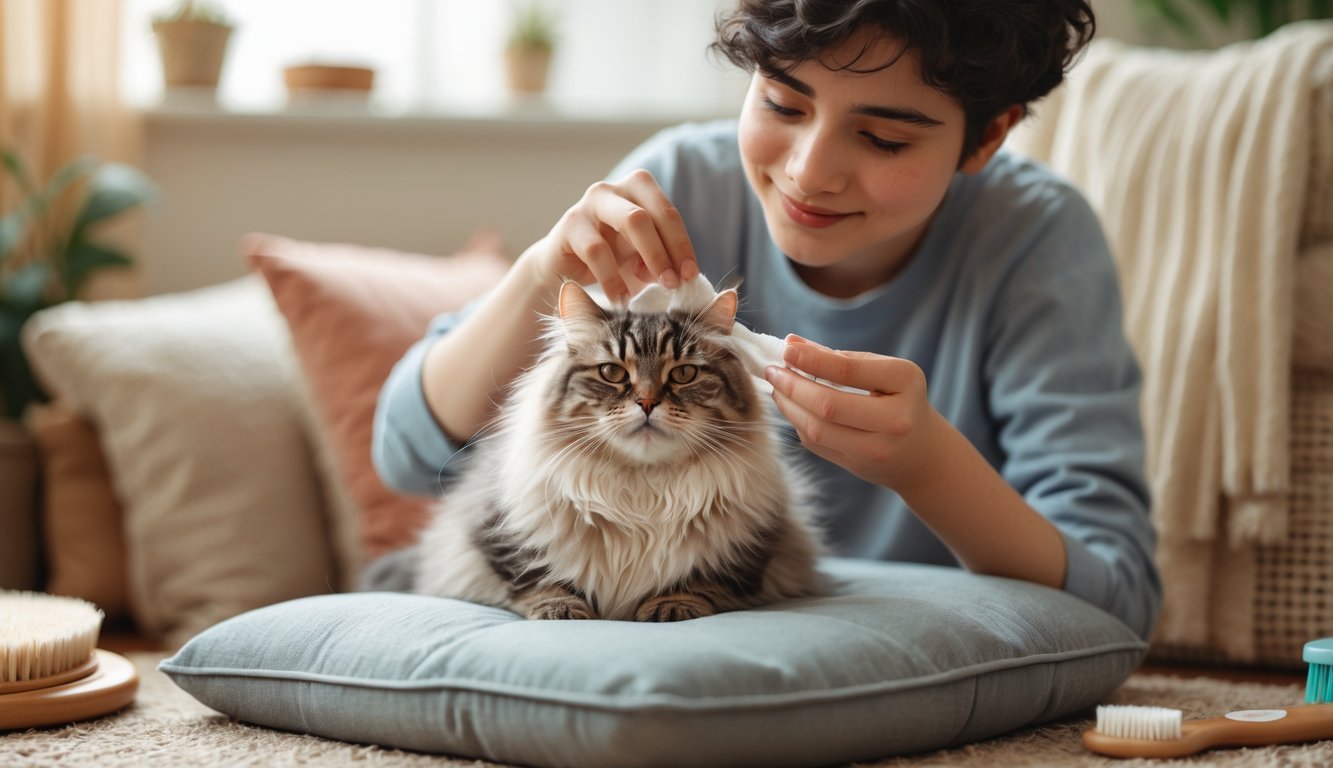
You don’t have to clean your cat’s ears all the time, but checking them weekly helps you spot dirt or signs of infection early.
Use only vet-approved ear wipes or cleaners made for cats. Human products or home remedies can actually irritate the ear canal.
Hold your cat gently and wipe just the outer part of the ear. Don’t stick anything deep inside—you could hurt the eardrum.
If you notice redness, swelling, or a weird smell, stop and call your vet.
Regular cleaning keeps your cat comfy and helps avoid buildup that could cause irritation.
With a little practice, this becomes just another easy part of your grooming routine.
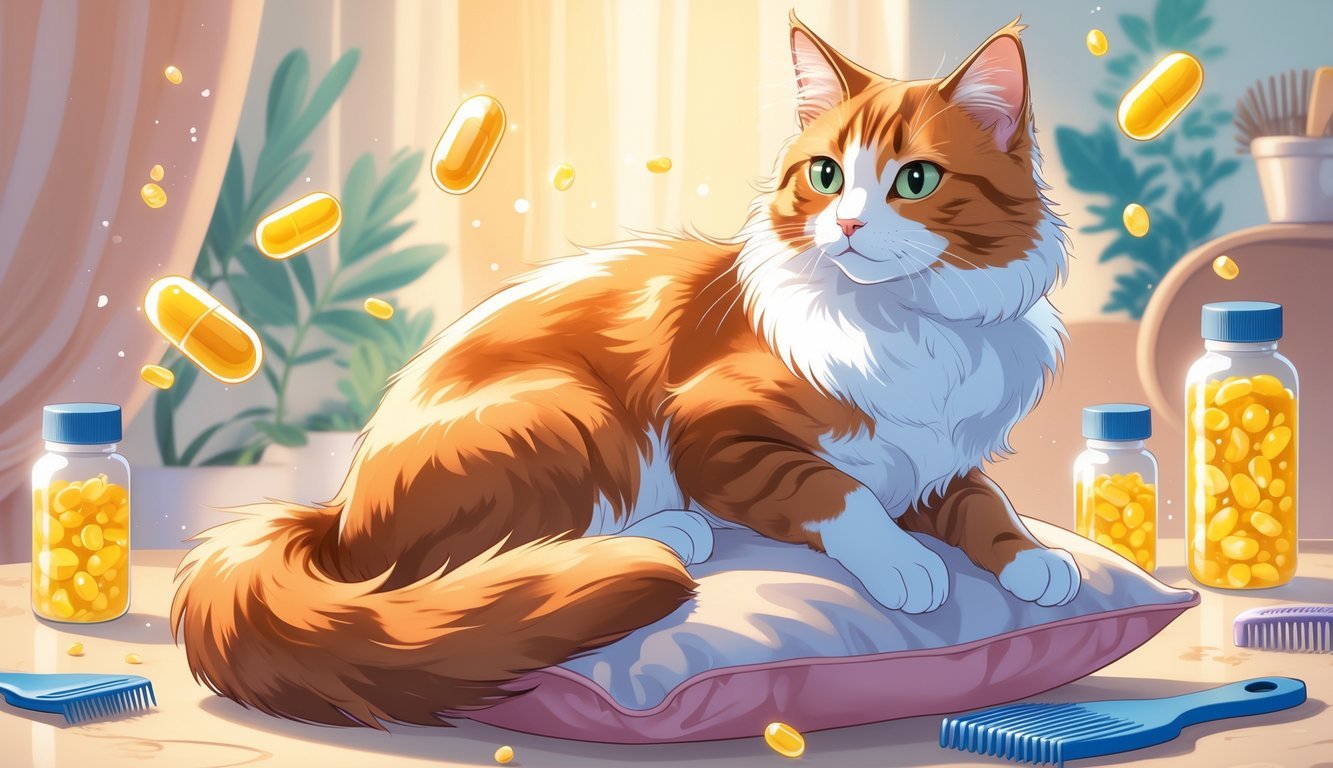
Adding omega-3 supplements to your cat’s routine can really boost their coat. These healthy fats help keep skin hydrated, which cuts down on dryness and flakiness.
A well-moisturized coat often just looks better—smoother and shinier.
You’ll find omega-3s in fish oil, flaxseed oil, and some pet-specific supplements. Most come in liquid or capsule form, so you can mix them into your cat’s food.
Always pick products made for pets to make sure you’re giving the right dose.
Omega-3s also help with shedding and overall skin health. When your cat’s skin feels good, their fur grows in stronger and softer, which makes grooming easier for you, too.
Before starting any supplement, check with your vet. They’ll help you pick the right type and amount for your cat.
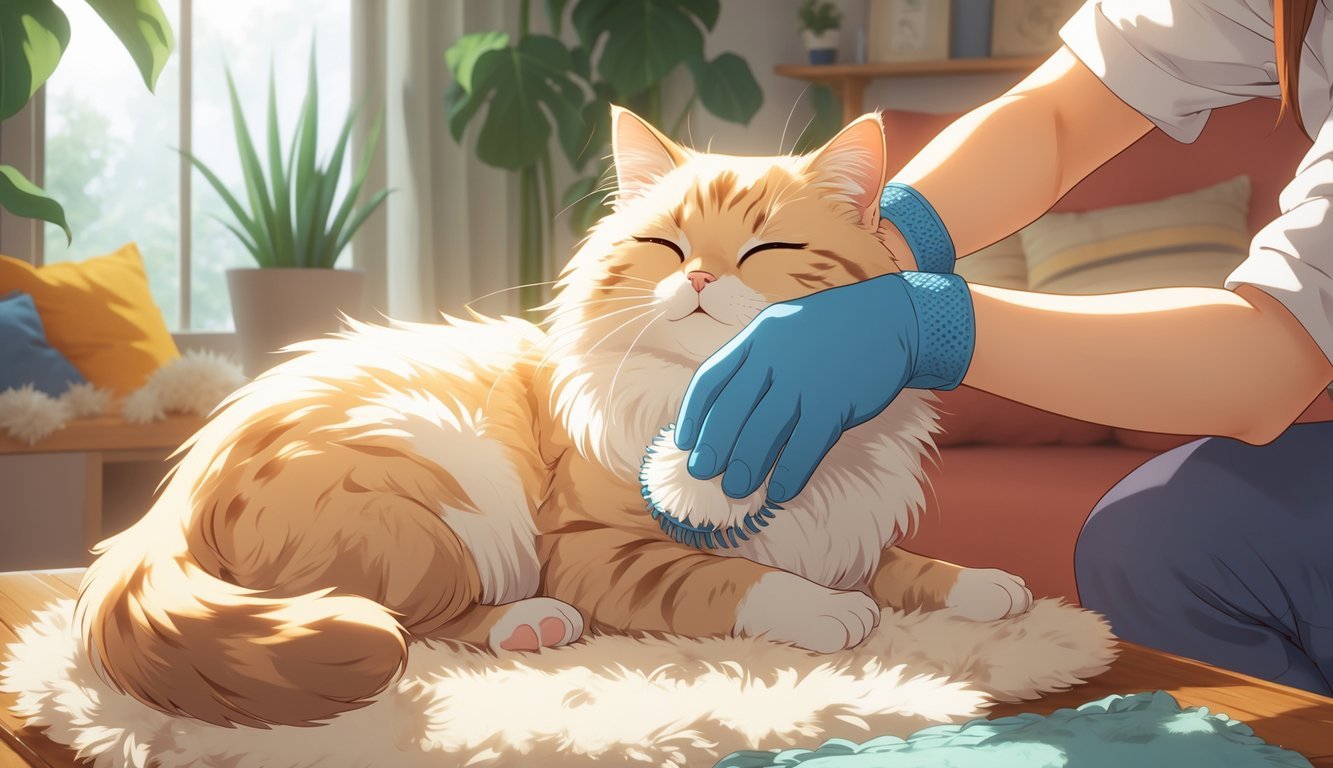
A grooming glove is a simple tool that keeps your cat’s coat neat. Just slip it on and pet your cat like usual—the soft tips grab loose fur without pulling.
Use the glove a few times a week to manage shedding. The hair sticks to the glove, so cleanup is super easy.
Your cat might love the gentle massage the glove gives. It feels like regular petting, so grooming becomes less stressful.
This also helps spread natural oils through the coat and boosts circulation, which gives the fur a healthy sheen.
You can even use the glove during bath time to help lather shampoo and work through tangles. It makes the whole process quicker and less of a hassle.
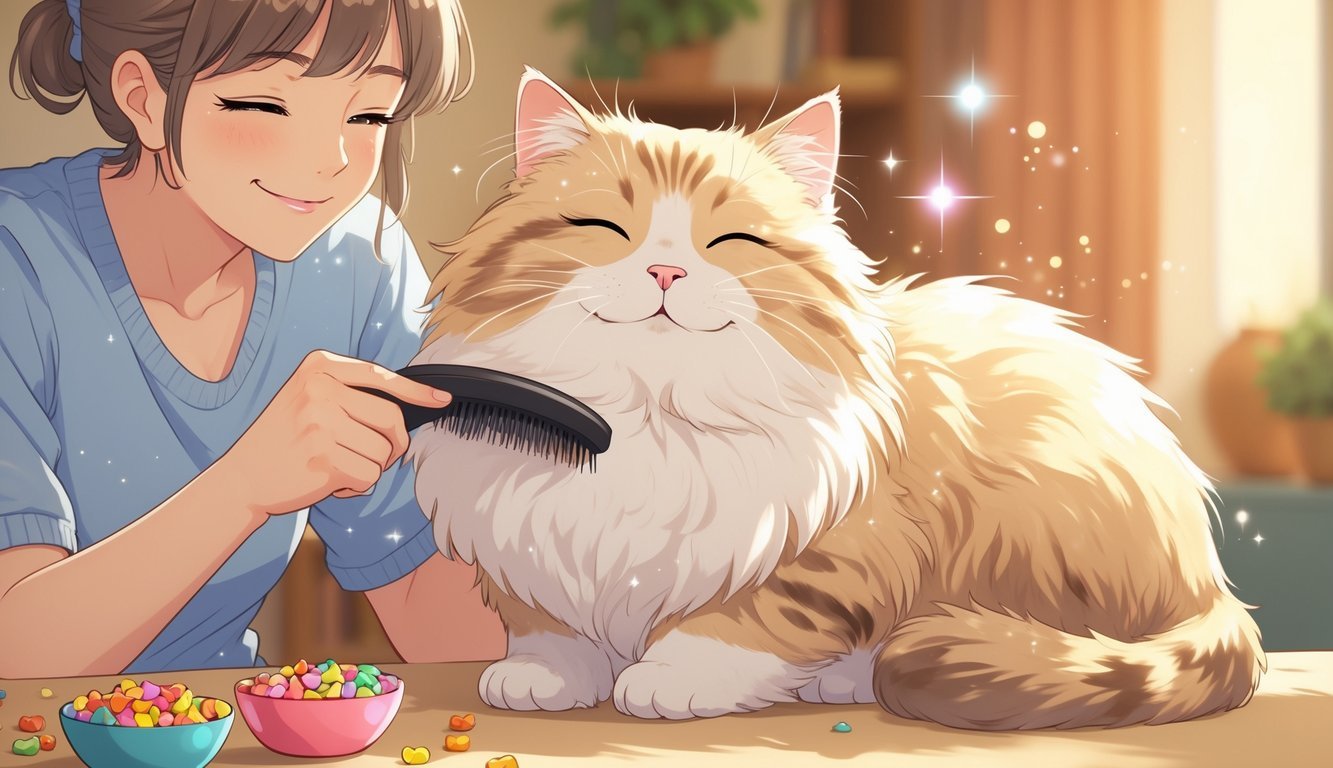
Turn grooming into something your cat enjoys by pairing it with rewards. Keep some treats handy and offer one after brushing.
This helps your cat link grooming with something good.
Use a calm, gentle voice as you groom. Soft praise reassures your cat and helps them relax.
If your cat seems nervous, keep the session short and end with a treat. Over time, they’ll start expecting something nice at the end, which makes everything easier.
Consistency is key. When you always use treats and gentle praise, your cat learns that grooming is safe and even a little rewarding.
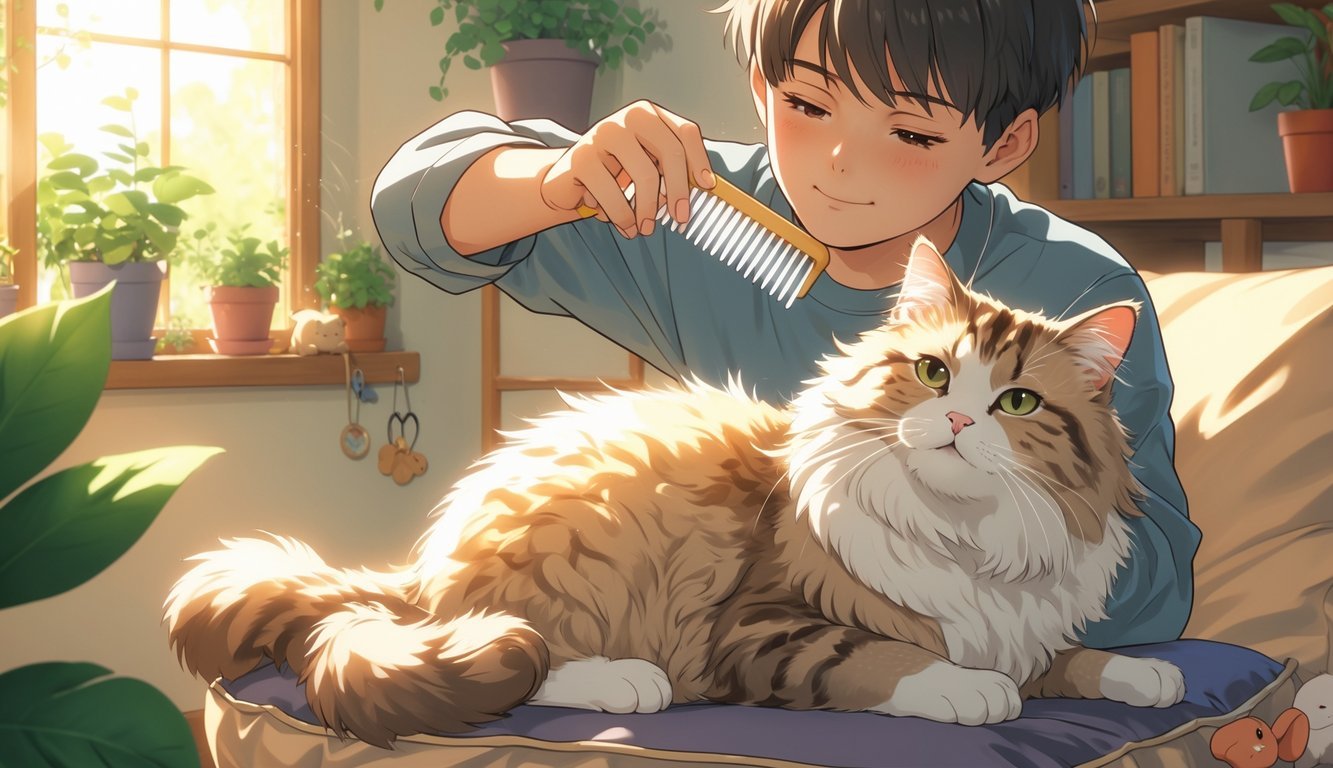
Mats form when loose hairs tangle together, and they’re more common in long-haired cats—but any coat type can get them.
Check for mats regularly so you can catch them before they get tight.
Use a wide-tooth comb to work through the fur gently. Start at the ends and move toward the skin, loosening knots without yanking.
Hold the fur near the skin as you comb. This cuts down on tugging and keeps your cat comfortable.
If you find a small mat, use patience and maybe a little detangling spray made for pets.
For bigger or stubborn mats, take breaks if your cat gets fidgety. Don’t force the comb through—it’ll just hurt.
If you can’t comb out a mat safely, trimming or a trip to the groomer might be best.
Checking for mats a few times a week keeps the coat smooth and helps avoid bigger tangles. Regular combing also means less shedding and easier grooming sessions.
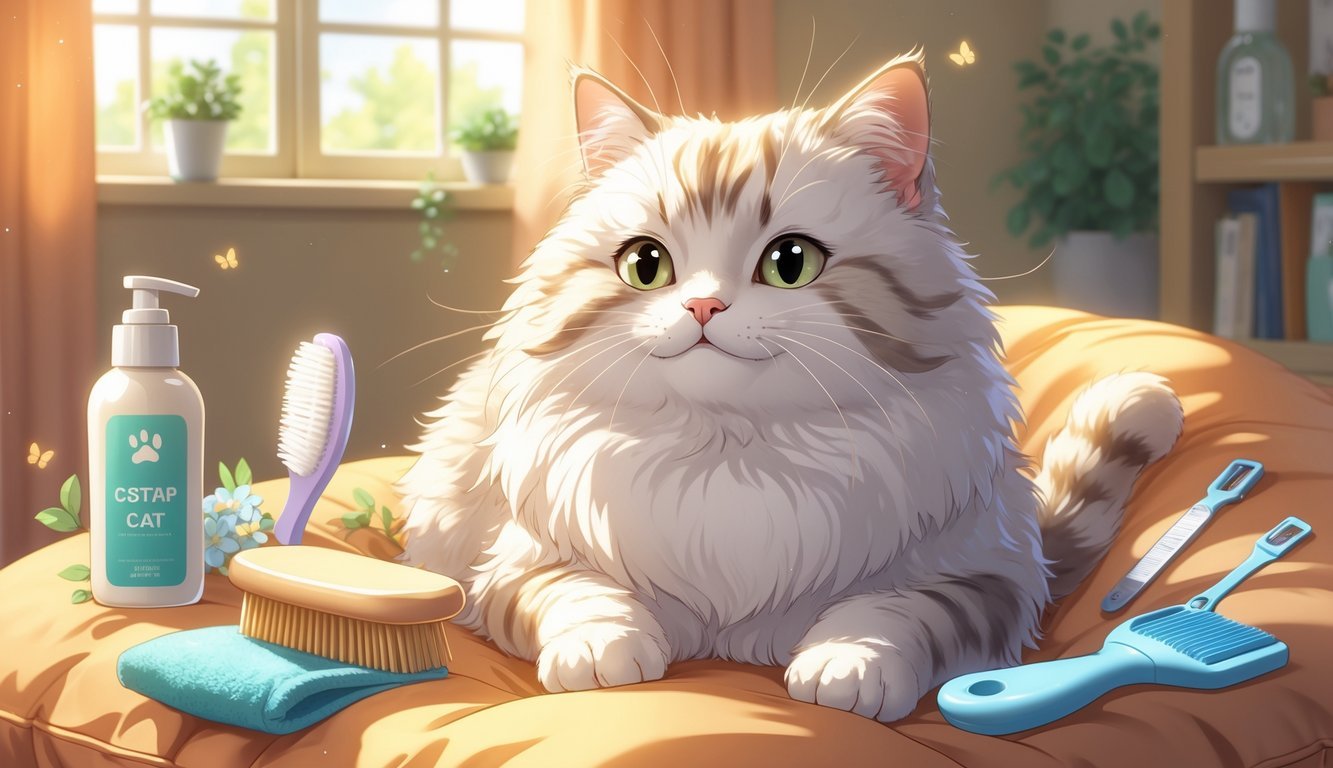
Your cat’s coat plays a big part in their comfort and health. Different coat types need different care, and some issues—like mats or shedding—can become real problems if you ignore them.
Cats can have short, long, or hairless coats, and each type needs its own approach.
Short-haired cats usually need less brushing, but regular grooming still helps with shedding and hairballs.
Long-haired cats need daily attention to stop tangles and mats before they start.
Hairless cats don’t shed fur, but their skin needs gentle cleaning to remove oils.
Here’s a quick way to remember:
Choose the right tools for the job. A slicker brush is great for long coats, while grooming gloves or rubber brushes work for short coats.
For hairless cats, stick to soft cloths or cat-safe wipes.
When you match your grooming routine to your cat’s coat type, you keep their skin and fur healthy—and cut down on mess around the house.
Matting can be a real headache, especially if your cat has long hair. Those mats tug at your cat’s skin and definitely make them uncomfortable.
Brushing regularly usually keeps mats away, but if you spot one, grab a wide-tooth comb or a mat splitter. It’s better than using scissors, since you don’t want to risk hurting your cat.
Shedding is another thing you’ll probably deal with. Even short-haired cats shed more than you’d think, and all that loose fur can lead to hairballs.
Try brushing more often, or use grooming gloves—they really help cut down on the amount of fur your cat ends up swallowing.
Some cats, especially hairless ones, get oily buildup on their skin. Others have sensitive skin that reacts to harsh products.
Stick with gentle, cat-safe grooming products to avoid irritation. Take a look at your cat’s coat once a week—just check for knots, dandruff, or bald spots. It’s much easier to catch problems early that way.
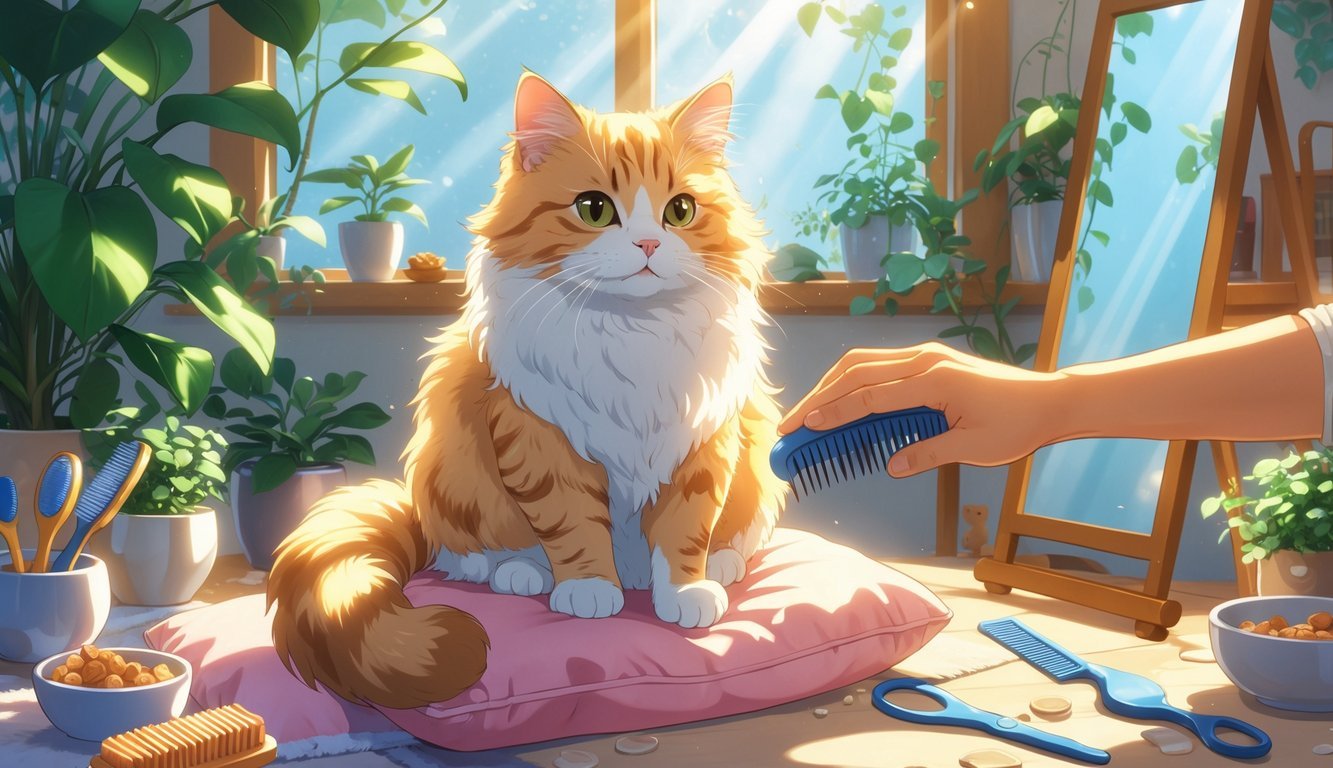
Your cat’s skin and coat say a lot about their health. What you feed them—and how quickly you notice changes—can really affect how comfortable and good-looking they are.
A balanced diet keeps your cat’s skin healthy and their fur shiny. Cats need animal protein because it gives them the amino acids that help fur grow strong and smooth.
If your cat doesn’t get enough protein, you’ll probably notice their fur looking dull or brittle.
Fats matter too. Omega-3 and Omega-6 fatty acids help cut down on dryness, itchiness, and shedding.
You’ll find these in things like fish oil, salmon, or special supplements for cats.
Don’t forget about hydration. Cats that don’t drink much water often show it in their skin and fur.
Try feeding wet food or set up a pet fountain—sometimes that’s all it takes to get them to drink more.
Here’s a quick look at some important nutrients and what they do:
| Nutrient | Benefit |
|---|---|
| Protein | Builds strong fur and supports growth |
| Omega-3 fatty acids | Reduce inflammation and dryness |
| Omega-6 fatty acids | Support skin barrier and coat shine |
| Vitamins A & E | Aid skin repair and protect cells |
| Water | Prevents dryness and supports circulation |
You can usually spot skin problems early if you know what to watch for. Redness, bald patches, or flaky skin might mean your cat’s dealing with irritation or allergies.
If you notice your cat scratching or licking a lot, that’s another big clue something’s off.
Try running your hands through your cat’s fur during grooming. You might feel bumps, scabs, or even oily spots.
Those could mean parasites, fungal infections, or something else going on with the skin.
Keep an eye on how much your cat sheds. Shedding happens, sure, but if you suddenly see a lot more hair coming out or find clumps, it’s probably time to call the vet.
Don’t brush off changes in your cat’s skin odor, texture, or color. Catching things early makes it way easier to help your cat feel better.